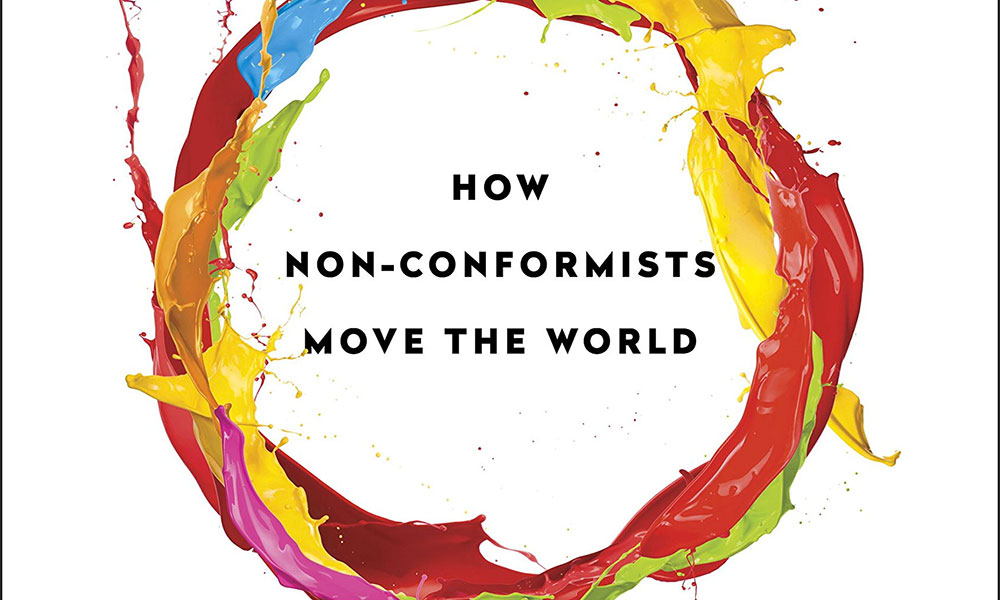
Books: Original Thinking
What’s behind winning ideas? Adam Grant's latest book breaks down the benefits of nonconformity.
Originals: How Non-Conformists Move the World
By Adam Grant; Viking; 336 pages; $27
Musk. Branson. Tarantino. They’re among the famous few we immediately peg as “originals,” disruptors gifted with the gusto, intelligence, and creativity needed for advanced risk-taking and innovation. Think you and your association can’t swing that kind of “original”?
The top-rated teacher at the University of Pennsylvania’s Wharton School, Adam Grant, Ph.D., begs to differ. In his second likely bestseller Originals: How Non-Conformists Move the World, Grant revels again in uniting new research with gifted storytelling, insights, and optimism in his quest to show how anyone and any organization can develop that little-bit-off thinking that leads to winning ideas.
Grant clearly enjoys taking apart and rebuilding upside down the presumed process behind “original” thinking: Procrastination in the office is bad, for instance. But it “turns out to be a common habit of creative thinkers and great problem solvers,” especially when “it leaves us solving problems at moments where we’re unfocused,” Grant writes.
First to market is always best? Meh.
Better to work with “frenemies” than enemies to refine or make an idea stick? It’s not better than converting the opposition. “Our best allies aren’t the people who have supported us all along,” Grant writes. “They’re the ones who started out against us and then came around to our side.”
From an idea’s timing to its not-100-percent novelty, from your choice of hobbies to your rank within siblings, original thinking and thinkers can bloom at any age and without a sky-high IQ or bank account. Don’t skip the foreword by Facebook COO Sheryl Sandberg.
The Smarter Screen: Surprising Ways to Influence and Improve Online Behavior
By Shlomo Benartzi with Jonah Lehrer; Portfolio/Penguin; 256 pages; $27.95
humans are weird. Our behavior, guided by our brain’s bizarre intricacies, is often both predictable and out of conscious control, despite our espousal of free will. Take our disturbing relationship with electronic screens. “[S]creens are not neutral conveyors of information,” write UCLA professor Benartzi and his science-writer coauthor. “Rather, they often alter the ways in which we respond to the message, creating unintended ripple effects we need to consider in advance.” Small, often counterintuitive design tweaks, such as purposely making text harder to read, can squelch or spark our intrinsic visual biases and behavioral patterns, affecting how we think, choose, and buy. Among the authors’ advice: “Get into the A/B testing game” and experiment with apps that improve decision-making. A fascinating but spooky marketing must-read.
Content Inc.: How Entrepreneurs Use Content to Build Massive Audiences and Create Radically Successful Businesses
By Joe Pulizzi; McGraw-Hill Education; 316 pages; $25
Only 23 percent of nonprofits in North America, Australia, and the United Kingdom document and monitor their content marketing strategy, reveals a 2015 benchmarking study by the Content Marketing Institute and MarketingProfs. Another 43 percent admit to only a verbal strategy. Pulizzi, CMI’s founder and CEO, aims to improve those numbers by outlining a practical framework for content marketing leadership that builds businesses. From “content tilting” to “harvesting audience,” he explains the tactics and theory behind good goal-setting, diversification, and collaborative frameworks that systematize processes. Hefty to-do lists and “Content Inc. Insights” make clear that the hard work of effective content marketing is not for the timid. Focuses on organizations with startup mentalities.
(Amazon)






Comments